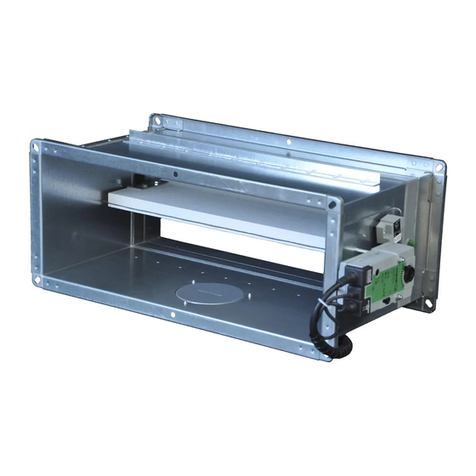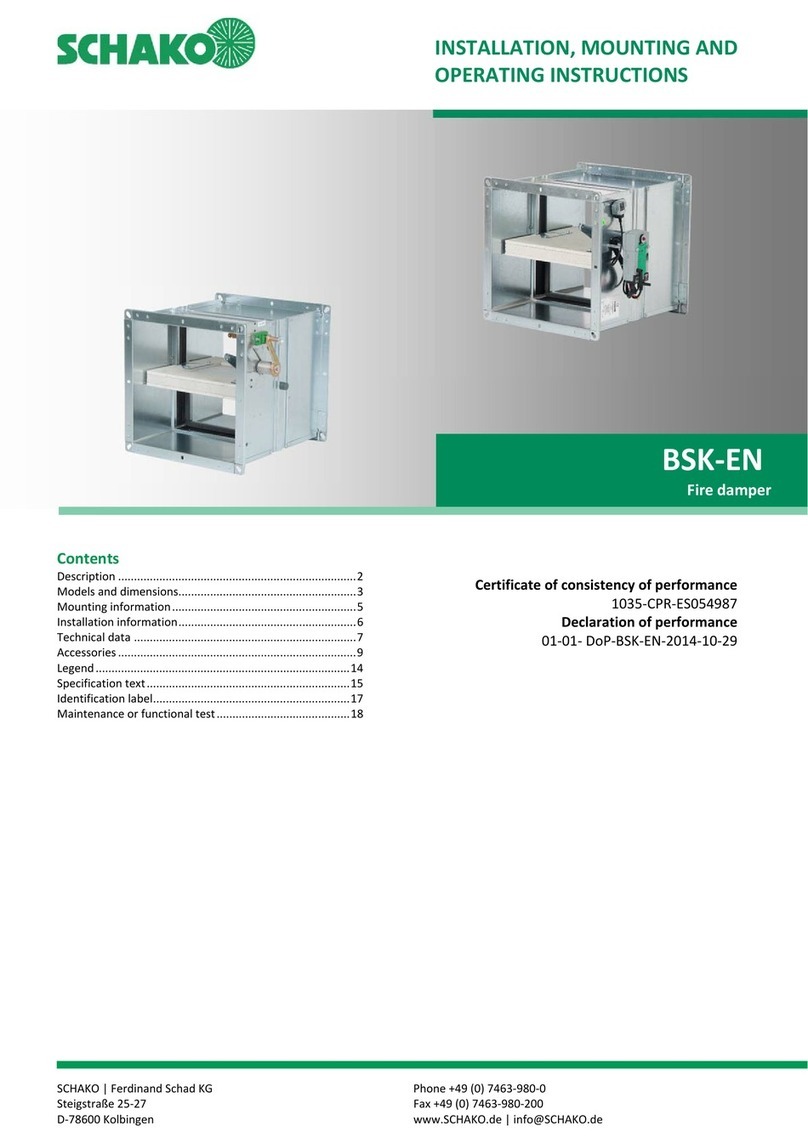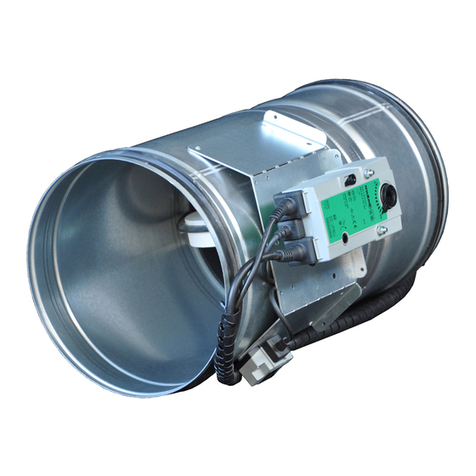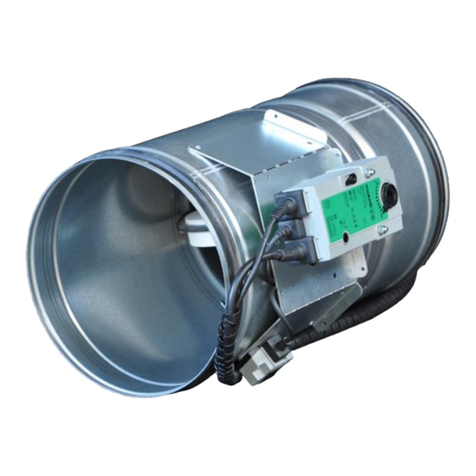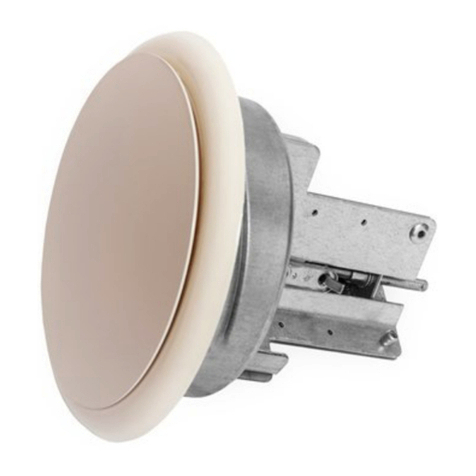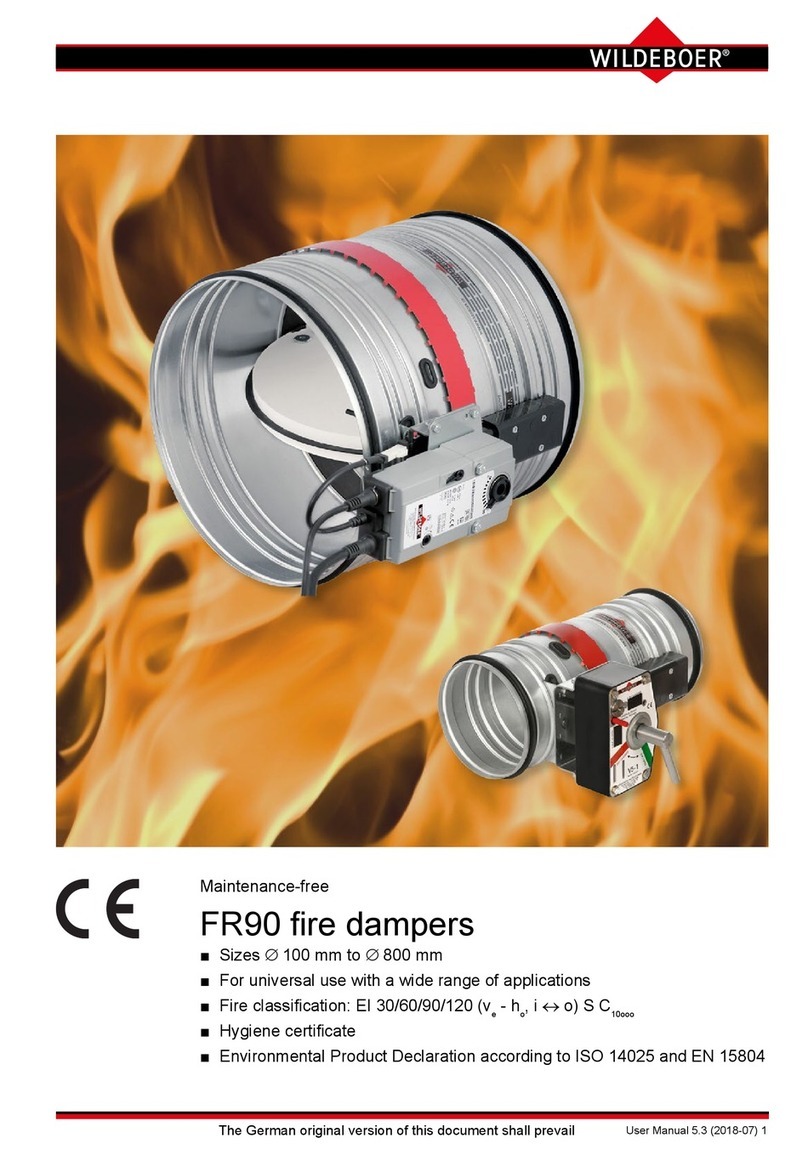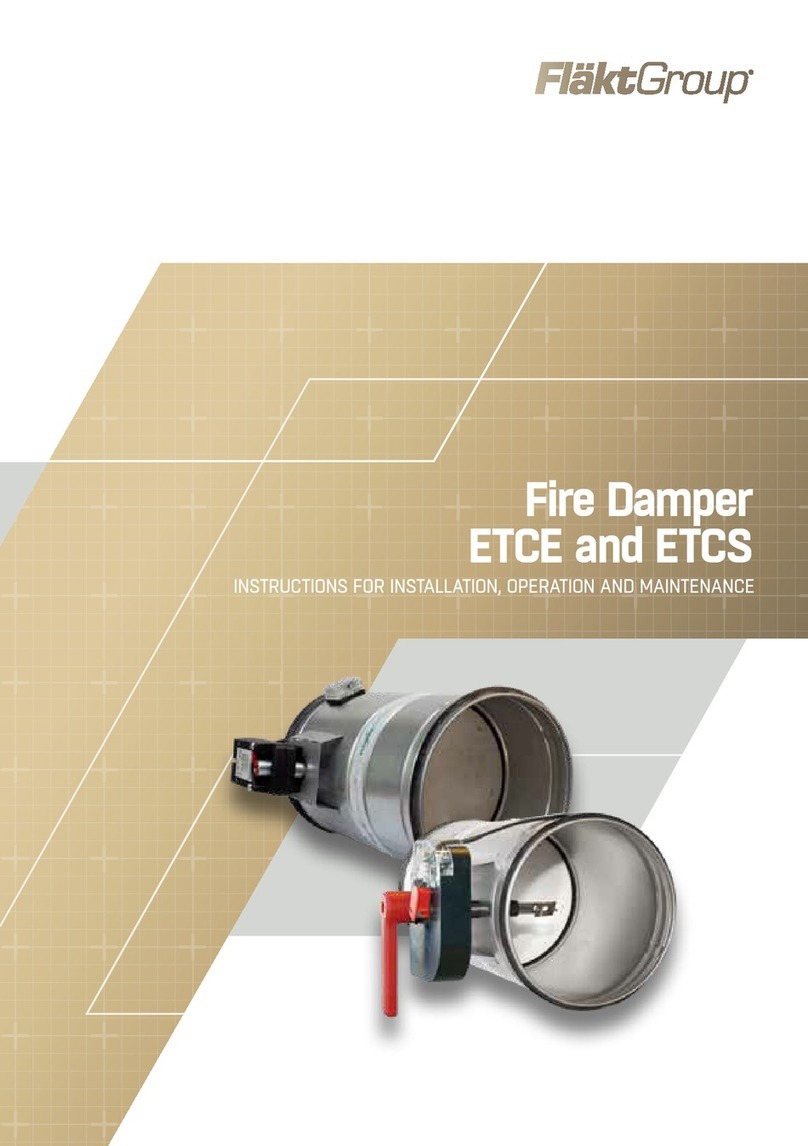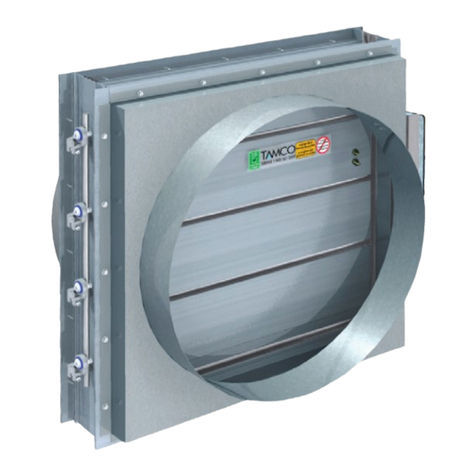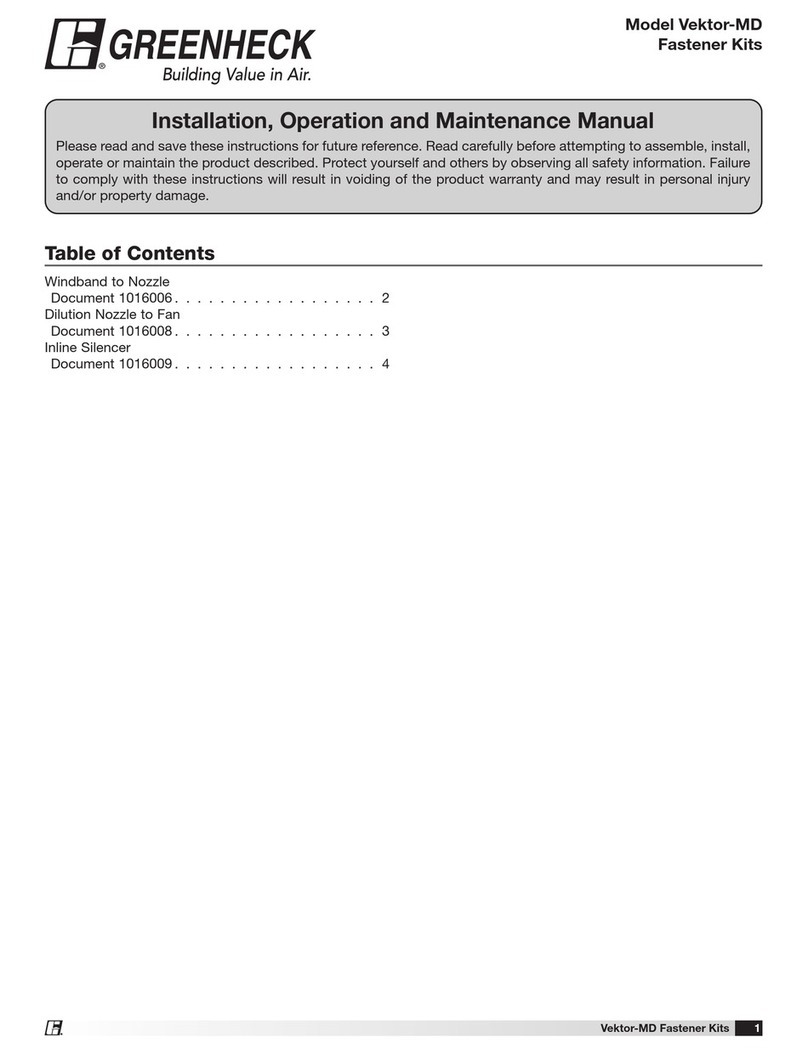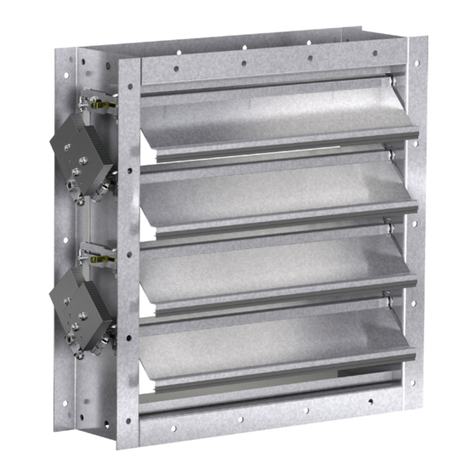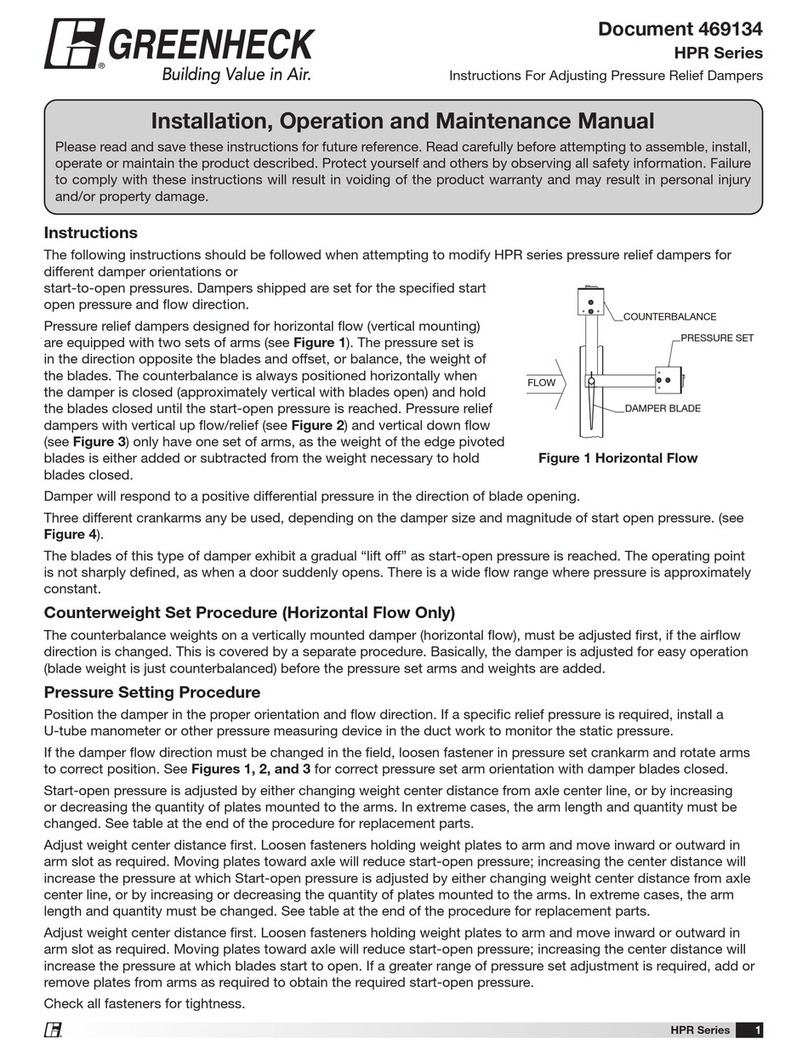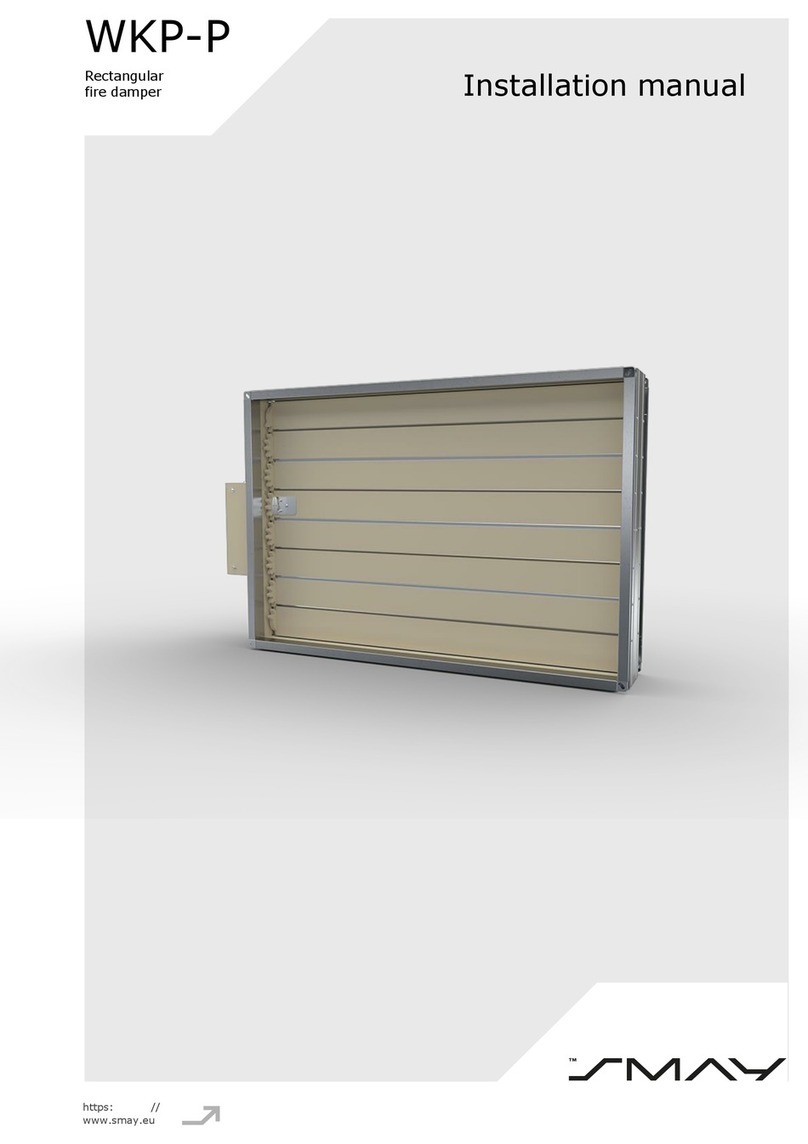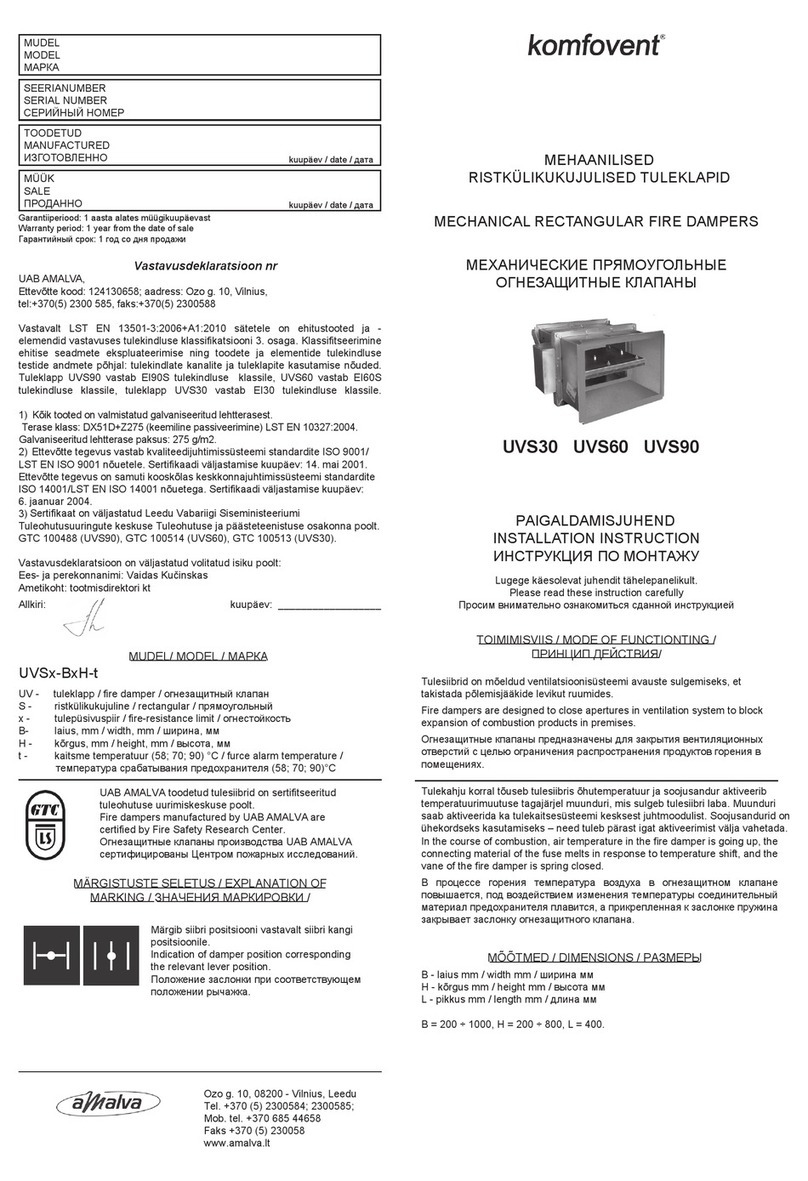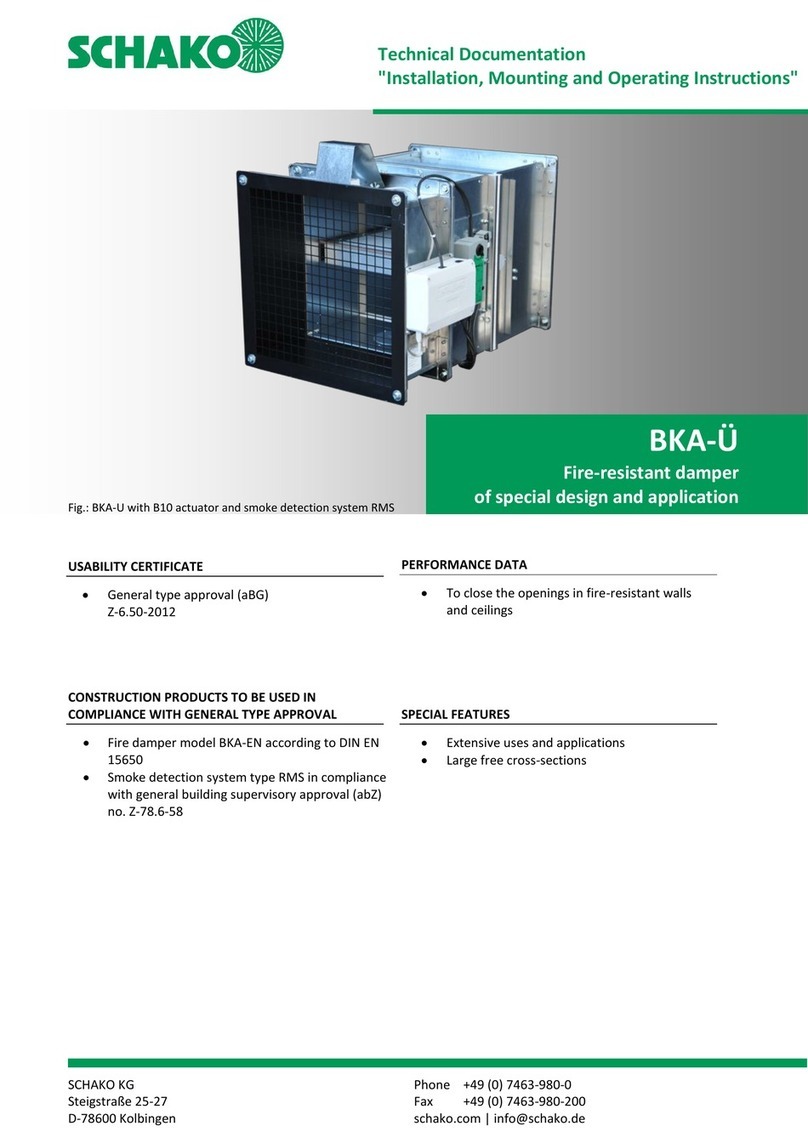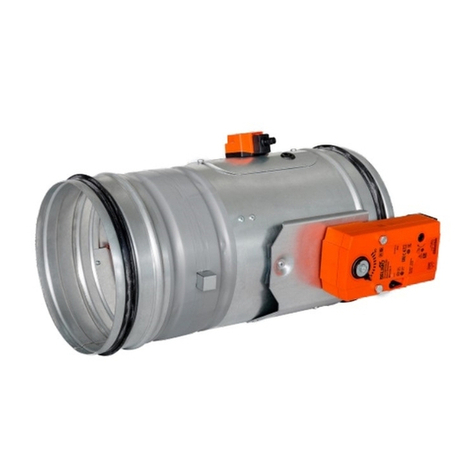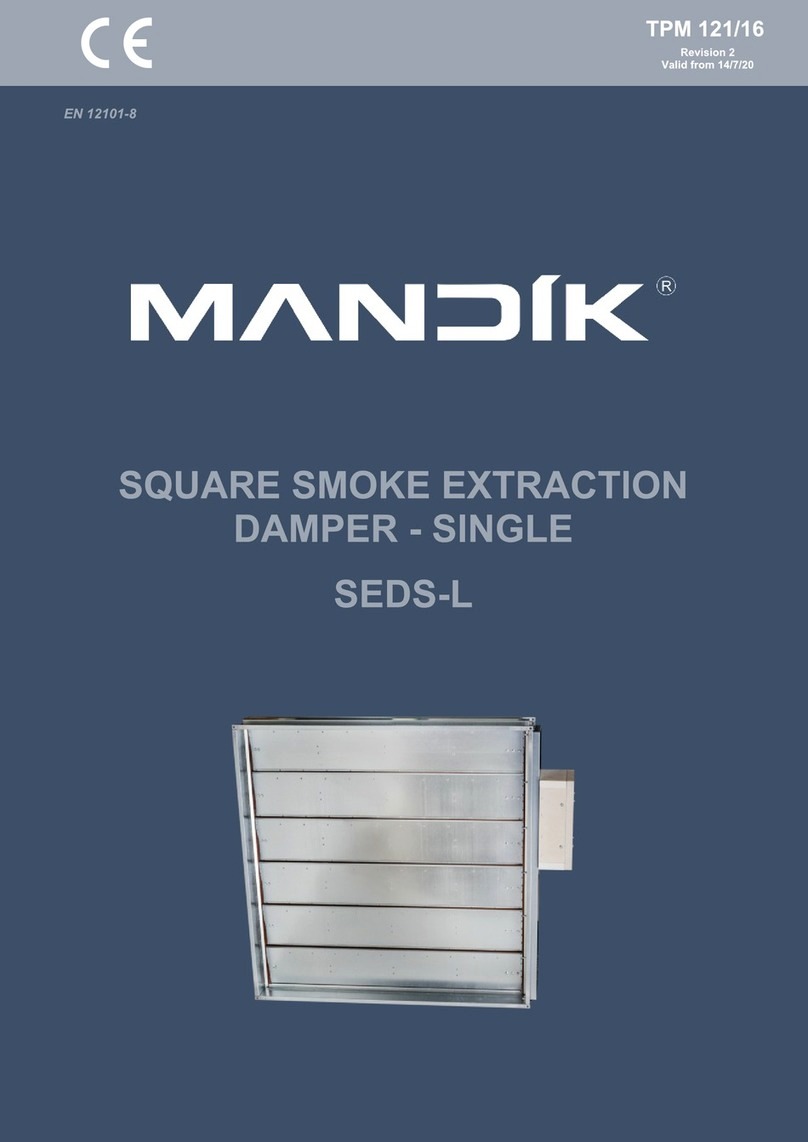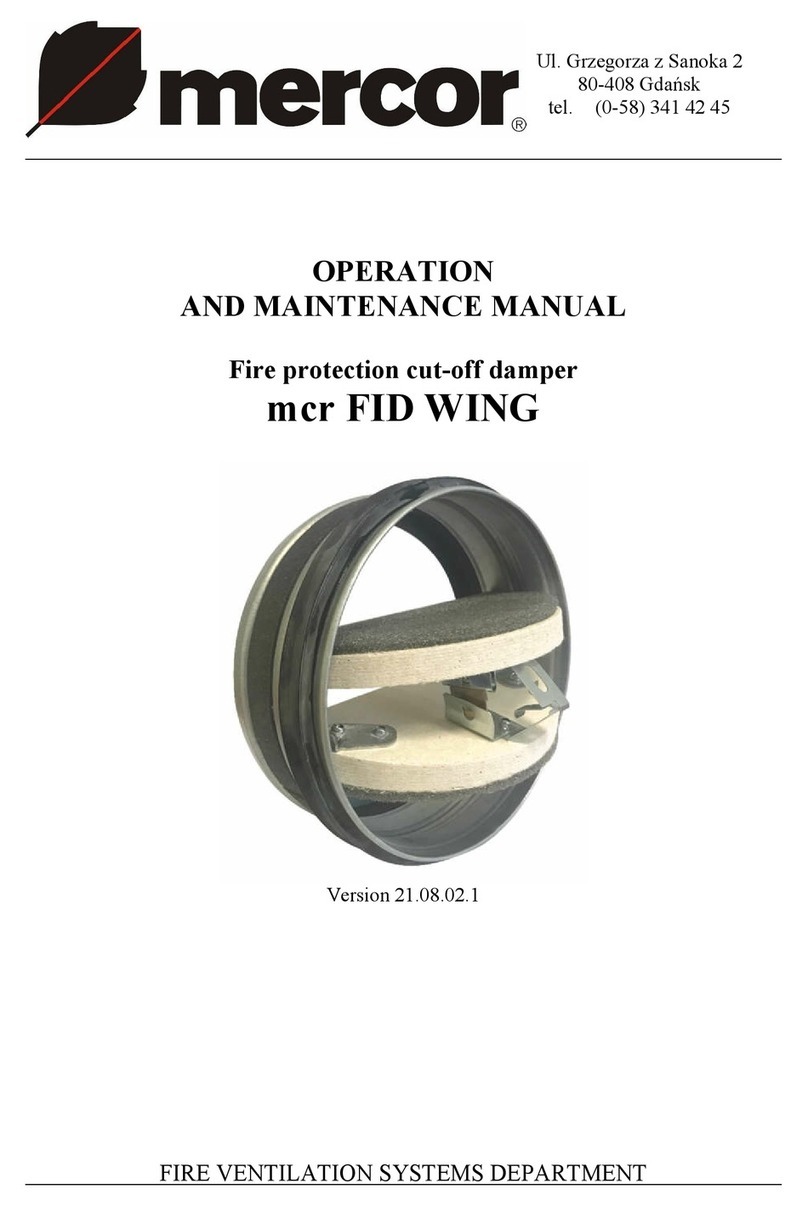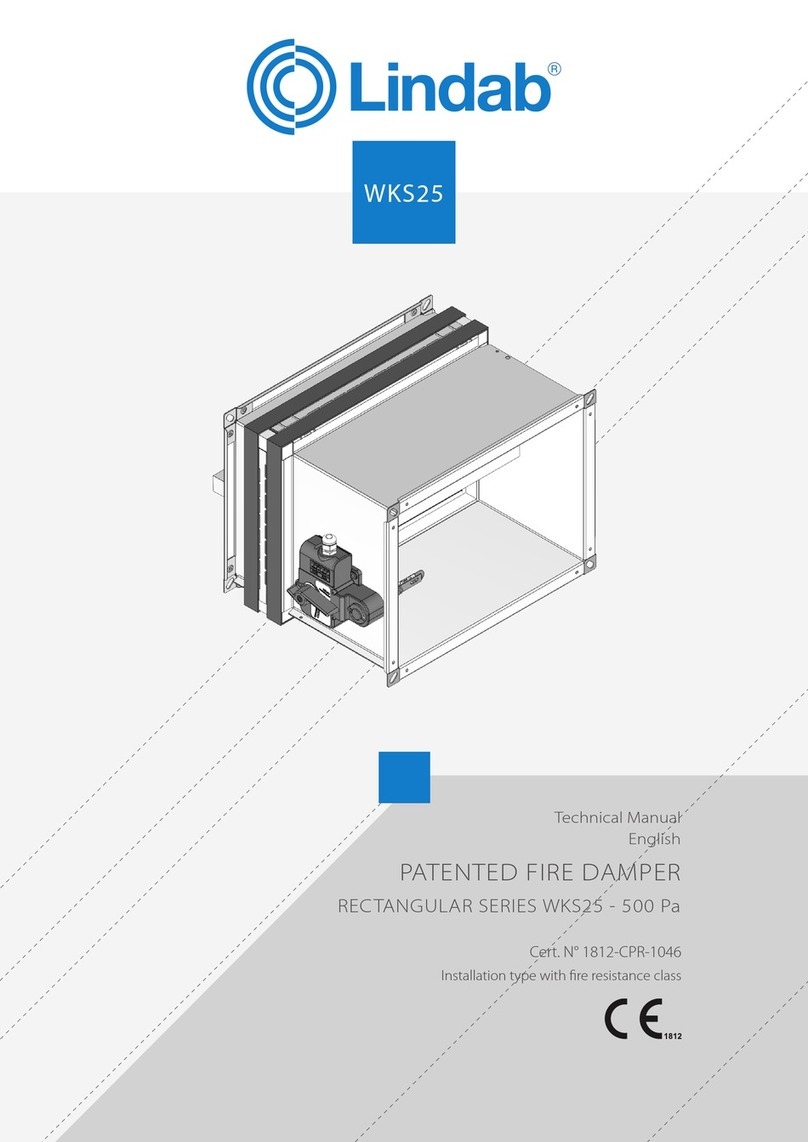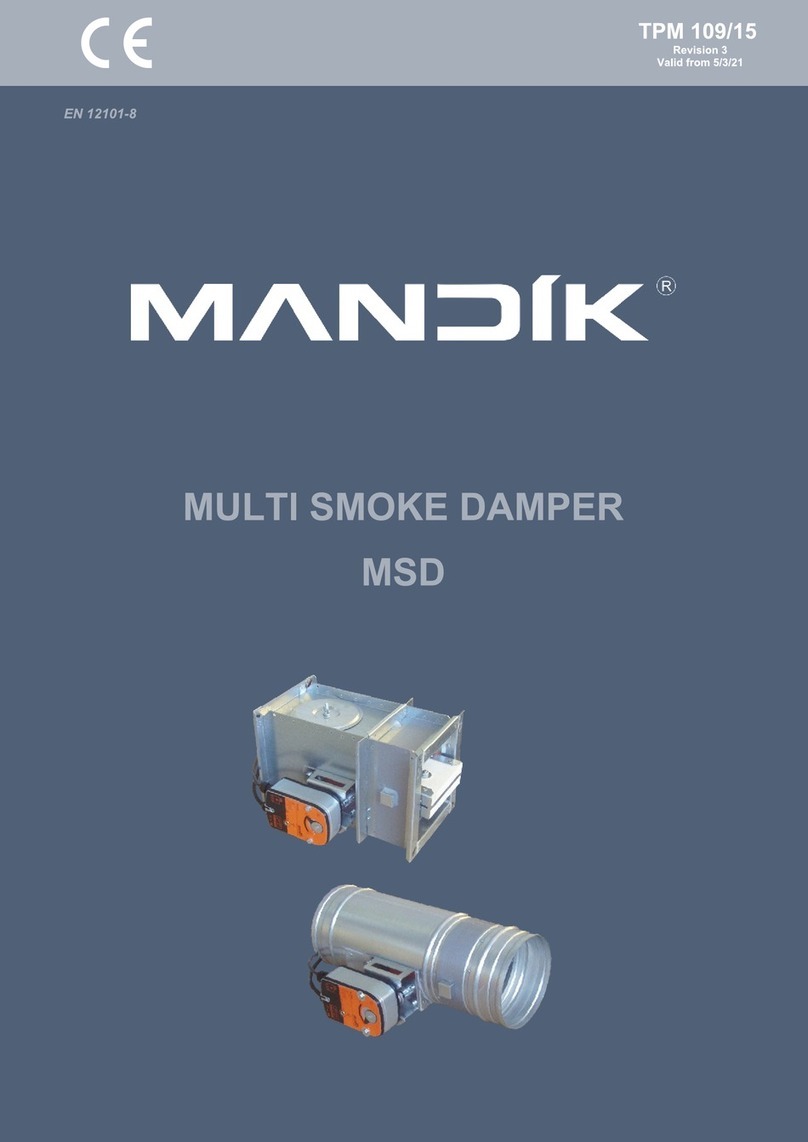
Fire Damper Model BSK-RPR
Technical documentation
Description
Construction subject to change.
No return possible Version: 2017-08-09 | Page 3
DESCRIPTION
Fire dampers, installed in ventilation ducts (air conditioning
systems), serve for the automatic locking of fire lobbies.
The fire damper BSK-RPR corresponds to EN 15650, EN 13501-
3 and EN 1366-2.
The BSK-RPR has been tested according to EN 1366-2 in compli-
ance with Declaration of Performance no. DoP-BSK-RPR-2017-
08-09. It has the Performance Reliability Certificate according to
EU-Bau PVO 0761-CPR-0245 and the EC Certificate of Conformity
0761-CPD-0263. Its category according to EN 13501-3 is EI 90 (ve,
hoi ↔ o) S.
According to Directive 2014/34/EU, EC Certificate of Conform-
ity Number EPS 09 ATEX 2 153 X, its use in areas subject to
explosion hazards is permitted, not only with spring return ac-
tuator X10 (ExMax-5.10-BF), including safety temperature lim-
iter (FireSafe or ExPro-TT), but also with mechanical trigger via
fusible link (manual actuation with or without ATEX limit
switch ES-Ex). The fire damper is marked as follows according
to ATEX:
II 2 G IIC T6
II 2D T80°C
II 3 D T80°C*)
EPS 09 ATEX 2 153 X
*)when using the safety temperature limiter FireSafe.
The national standards and guidelines must be observed in
connection with this technical documentation, installation,
mounting and operating instructions. Further information on
ATEX can be found in the additional operating instructions
BSK-RPR according to ATEX 2014/34/EU (document: Z09/46).
For service, retrofitting, etc., inspection openings must be pro-
vided on site in suspended ceilings, shaft walls, connected ven-
tilation ducts etc., if necessary. They must be built in in suffi-
cient numbers and sizes and must not impair the functioning
of the fire dampers.
The fire dampers must be connected to the ventilation system
by means of ventilation ducts either on one or on both sides.
When connected on one side, security grilles made of non-
flammable building materials (EN13501-1) must be provided
on opposite sides.
The fire dampers can be connected to non-flammable or to
flammable ventilation ducts.
Housing made of galvanised sheet steel (standard), option-
ally (at an extra charge):
Housing made of stainless steel material no. 1.4301
or material no. 1.4571
Housing with DD coating (two-component top coat
based on polyurethane varnish) inside / outside
Model with plug-in connection (-S) or flanged connection
(-F) according to EN 12220 and DIN 24154-1, respectively.
Damper leaf made of silicate board,
optionally (at an extra charge):
DD coating (RAL 7035 / light-grey)
Cold and hot leakage requirements according to EN 1366-
2 are complied with using circumferential rubber and intu-
mescent seals.
Horizontal or vertical position of the damper leaf axle pos-
sible.
The installation position is independent of the air flow di-
rection.
Thermal release via fusible link 72°C or 98°C;
optionally (at an extra charge)
equipped with electrical or magnetic release de-
vices
Use: max. operating pressure of 1000 Pa at vface ≤10 m/s
Housing leakage class C according to EN 1751
Use or connection of a smoke release device with general
building supervisory approval (e.g. SCHAKO smoke detec-
tion system RMS, see technical documentation smoke de-
tection system RMS) in connection with suitable electric,
magnetic (magnetic clamp) release devices of the fire
damper is possible; only release devices working by the
"currentless closed" principle may be connected to the
RMS system; the propagation of fire and smoke is effec-
tively prevented. Optimal integration into the building
control system by means of the SCHAKO EasyBus signalling
and switching bus system (see technical documentation
EasyBus) or the SCHAKO fire damper mini-controller BKSYS
(see technical documentation BKSYS).
MAINTENANCE INFORMATION
We would like to point out that only suitable cleaning materi-
als may be used to clean the stainless steel version of fire
dampers!
ATTENTION
Building systems have to be arranged, installed and main-
tained in such a way that they prevent fire and propagation of
fire and smoke (fire propagation) and allow evacuation of per-
sons and animals as well as efficient fire extinguishing work in
case of fire. A propagation of smoke through the ventilation
and air-conditioning systems can effectively only be prevented
by means of suitable electric or magnetic (magnetic clamp) re-
lease devices in connection with a smoke detection system.
We therefore recommend fitting the fire dampers, for exam-
ple, with electric spring return actuators that can be triggered
by the smoke detector.
